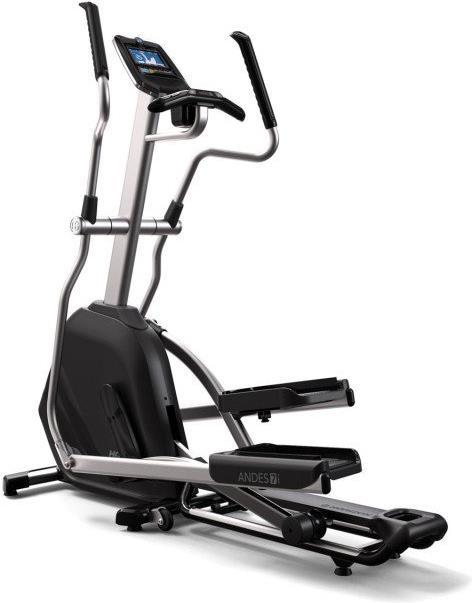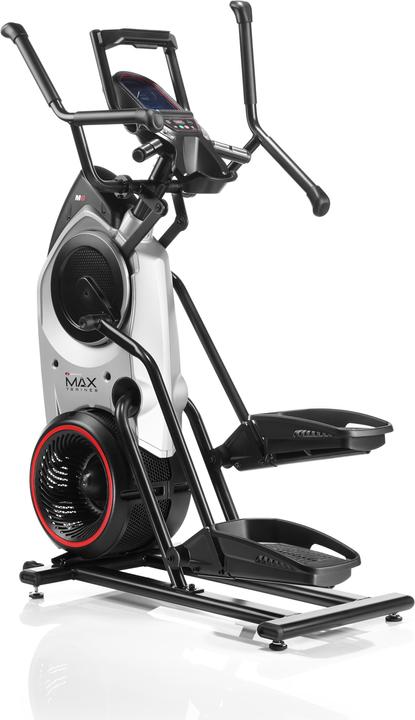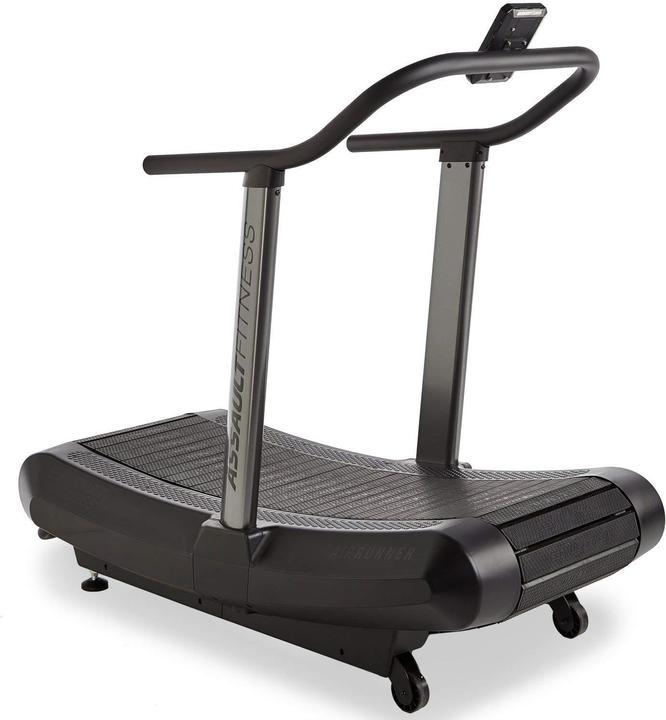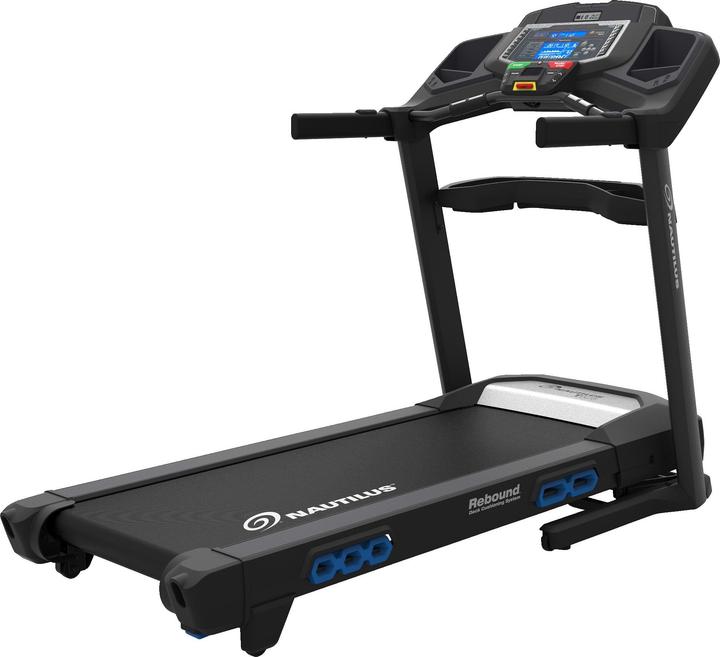
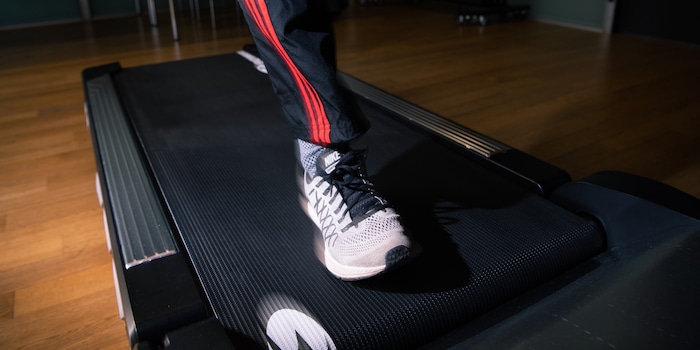
Fitness within your own four walls: Equipment for endurance training
If you don't want to be fighting over the machines at peak times in the gym, a treadmill, cross trainer or elliptical trainer can be the perfect solution for at home. All you need is some space, motivation - and the right machine.
There are many good reasons to go to the gym or run through the woods after work. But that's not always possible. And maybe you prefer to work out at home. If you're thinking about bringing fitness equipment into your home, you should be able to enjoy working out on it for a long time. The following is about equipment that is primarily suitable for cardiovascular training.
Cross and elliptical trainers
Main advantages: Gentle on joints and quiet
Cross and elliptical trainers are at the top of the popularity scale, and there are good reasons for this: they guide your movements, making them harmonious and easy on your joints. If you like, you can grip their movable arm bars to involve your upper body in the workout. The low noise level not only pleases your neighbours, you also don't have to turn up the volume on the TV. A floor protection mat also reduces the noise level.
Differences in the movement sequence
There are many explanations for the two terms cross trainer and elliptical trainer, but no generally applicable definition. The confusion is probably due to the fact that in Europe the term "cross trainer" was initially used, as training on it involves the upper body. The term "elliptical trainer" has become established in the USA and describes the movement sequence.
A common definition goes like this: A cross trainer has the flywheel at the back. Your feet are further apart and tend to move up and down. An elliptical trainer, on the other hand, has the flywheel at the front. Your legs are closer together and the movement is flatter. This results in a more natural running feel. Such models dominate in fitness studios. Regardless of what the machine is called in the end, it is important that you are aware of these differences in design and movement and take them into account when making your decision.
Flywheel at the back:

Flywheel front:
To all cross/elliptical trainers
Decision criteria:
The stride length is important and should not be less than 40 centimetres, even for short people. "Average types" can cope well with up to 50 centimetres. If you are well over 1.80 metres tall, it can be a little longer.
The pedal spacing (Q-factor) should be as small as possible and, measured at the inner edges, less than 20 centimetres. On good models such as the Andes 7i linked above, it is well below 10 centimetres. This is ergonomic and correspondingly good for the knee and hip joints.
The flywheel mass is designed to ensure an even motion sequence. Once you have set it in motion, it helps you to overcome the reversal point at which you cannot apply any force to the pedals yourself. So weight is basically a good thing. However, it is difficult to make general recommendations on this point. This is because the flywheel mass is made up of the weight of the flywheel and other components such as the drive disc, which you also move. With a high transmission ratio between the two discs, a lower flywheel mass is sufficient and manufacturers solve this technically in different ways. Konstruktionsbedingte Unterschiede hin oder her – mindestens 10 Kilogramm sollten schon verbaut sein, wenn die Schwungscheibe vorne sitzt. Ist sie hinten, werden sportlich Ambitionierte eher ab 18 Kilogramm aufwärts glücklich.
Size and weight are certainly crucial if your space is limited and you have to move the device frequently. However, the criteria of small and light are at odds with the requirements for stride length and flywheel mass. Your cross trainer must be stable and should be able to support a load of well over 100 kilos. The maximum load capacity is an indication of stability and quality. Before you make compromises for space reasons, look for a folding model or one with wheels.
You should also take a close look at the resistance levels and training programmes. The finer the resistance can be adjusted, the better. In many cases, the possibilities increase with the price, also in terms of the available programmes and recordable data. With innovative concepts such as the Bowflex Max series, you will receive training recommendations according to your fitness level. You can find out more about these models here.
Treadmill
Do you prefer to run "properly" instead of elliptically, but don't always like running outside? Then the treadmill is your friend. You may miss the fresh forest air, but you're practically training under laboratory conditions. Wind and weather have no influence, the surface is always well cushioned and your performance is absolutely comparable. However, you do need enough space.
Decision criteria:
The treadmill surface must not restrict you, otherwise indoor training will be uncomfortable and dangerous. If you only want to use the belt for occasional walking in the living room, you may be fine with a metre in length. When it comes to running, even shorter people should allow themselves at least 1.20 metres. If you are well over 1.80 metres tall, a treadmill length of at least 1.40 metres is recommended. Basically, the faster you run, the more room for manoeuvre you should have. Of course, this also applies to the width, which varies between 41 and 56 centimetres in our models.
Motor power is an important factor. Bist du ambitioniert oder eher schwer gebaut, dann sollten es mindestens zwei PS sein. Für intensives Intervalltraining sind drei PS oder mehr empfehlenswert. However, you can also spend a lot of money on a model without a motor: The AirRunner adapts to your speed and makes you poor. In return, it is also low-maintenance.
The incline levels can be set manually on inexpensive models and digitally on the higher-quality models. It is obvious that the automatic version is much more practical and allows you to easily complete different running programmes. On the "better" models, such as the Nautilus T628, the incline can be set to up to 15 degrees.
When it comes to features, the choice is huge. However, a flood of training programmes, data recording and evaluations only makes sense if you actually use them. Individual requirements vary greatly. On the other hand, clearly organised controls that are easy to reach while running are important for everyone. Quick selection buttons for your personal favourite programmes save you a lot of fiddling around and a heart rate-controlled programme adapts variably to your workload.
Home trainer
Velo ergometer
The bike ergometer has also survived the trend towards cross trainers and elliptical trainers. One of its advantages is that it can measure your performance very precisely and display it as wattage. The load can be controlled accordingly, allowing you to do very targeted health training. With the simplest home trainers, you control the resistance manually. On a better ergometer, for example, you can set a power level and the resistance is dynamically adjusted to your cadence. As with the cross trainer, the flywheel mass ensures a smooth movement that is easy on the joints. And if you have trouble with your sitting position, you might be happy with a reclining ergometer.
Spinning bike
Spinning bikes, also known as indoor cycles or speed bikes, are a very purist and sporty option. You sit on them in the same position as on a racing bike. The flywheel is free and you adjust the resistance mechanically with brake pads - everything is possible, from extremely strong to non-existent. The pedals keep turning as long as you don't disengage them. This allows you to achieve extremely high cadences. There is either no training computer or it is minimalistic.
AirBike
If you want to train in a seated position and involve your arms like on a cross trainer, the AirBike is an interesting option. As the name suggests, you are working against air resistance. This is known to increase continuously and exponentially. The faster you make the integrated windmill spin, the more strenuous it becomes. As you have to pedal, push and pull at the same time, the training is demanding for the whole body. However, you can also use just your arms or just your legs. The machines are popular in the Crossfit scene and offer various programmes and load control options via the integrated display. You can vary the intensity, distance or target performance.
Where does endurance training end and strength training begin? The transition is fluid. Here we continue with rowing trainers and strength stations.
Simple writer and dad of two who likes to be on the move, wading through everyday family life. Juggling several balls, I'll occasionally drop one. It could be a ball, or a remark. Or both.
Practical solutions for everyday problems with technology, household hacks and much more.
Show all